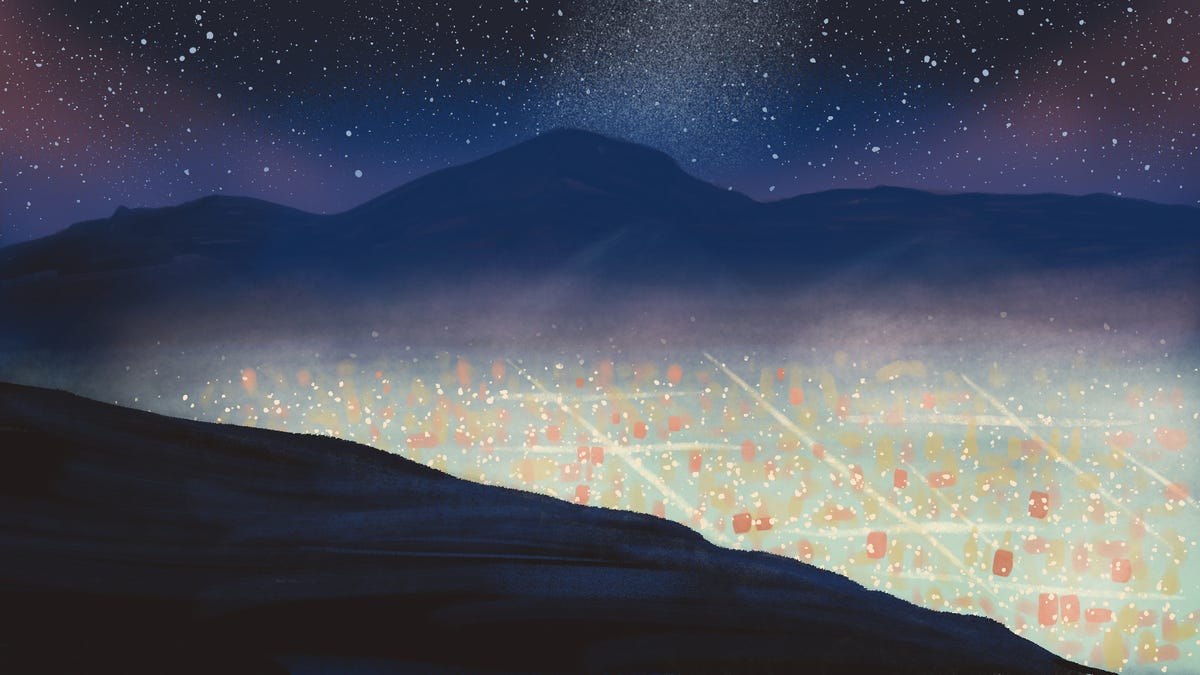
(Image credit: Mark Garlick/Science Photo Library/Getty Images)
An enormous asteroid more massive than two Empire State Buildings is heading our way, but unlike the so-called planet-killer comet in the recent movie “Don’t Look Up,” this space rock will zoom harmlessly past Earth.
The stony asteroid, known as (7482) 1994 PC1, will pass at its closest on Jan. 18 at 4:51 p.m. EST (2151 GMT), traveling at 43,754 mph (70,415 km/h) and hurtling past Earth at a distance of 0.01324 astronomical units — 1.2 million miles ( nearly 2 million kilometers), according to NASA JPL-Caltech’s Solar System Dynamics (SSD).
That may sound like a safe distance — and it is! But by cosmic standards, it’s close for such a large object. Asteroid (7482) 1994 PC1 measures about 3,609 feet (1,100 meters) long, and even though there’s no danger of a collision with Earth, NASA classifies the asteroid as a potentially hazardous object. This term describes asteroids that measure over 460 feet (140 m) long and have orbits that carry them within 4.6 million miles (7.5 million km) of Earth’s orbit around the sun, according to NASA’s Asteroid Watch.
Related: The 7 strangest asteroids: Weird space rocks in our solar system

The approaching asteroid is also part of a larger category of space rocks known as near-Earth objects (NEOs), which pass within about 30 million miles (50 million km) of Earth’s orbital path. NASA’s NEO Observations Program finds, identifies and characterizes these objects; survey telescopes have found approximately 28,000 NEOs that measure at least 460 feet in diameter, and about 3,000 new sightings are added each year, according to the Center for Near Earth Object Studies (CNEOS).
“But as larger and more advanced survey telescopes turbocharge the search over the next few years, a rapid uptick in discoveries is expected,” according to the CNEOS.
Once observers detect a near-Earth asteroid or comet, scientists analyze the object’s orbit to assess how close it might come to Earth. Though many thousands of asteroids and comets are currently zipping around the solar system, the objects in the CNEOS’ database pose no serious impact threats for the next 100 years or more, NASA says.
Astronomer Robert H. McNaught was the first to spot asteroid (7482) 1994 PC1, on Aug. 9, 1994. Other scientists then tracked its previous trips through our cosmic neighborhood by using McNaught’s observations to calculate the asteroid’s orbital path, speed and trajectory. They found that the asteroid orbits the sun once every 572 days, and they detected the visitor in telescope images going all the way back to 1974, according to EarthSky. And on Jan. 18, if visibility is good, the asteroid will be bright enough to be seen in a dark-sky location at night with a backyard telescope, EarthSky reported.
Close as the asteroid may be on Jan. 18, it came much closer on Jan. 17, 1933. That year, the space rock sailed past Earth at a distance of about 699,000 miles (1.1 million km), and it won’t come that close to us again until 2105, according to SSD.
Originally published on Live Science.

Mindy Weisberger is a Live Science senior writer covering a general beat that includes climate change, paleontology, weird animal behavior, and space. Mindy holds an M.F.A. in Film from Columbia University; prior to Live Science she produced, wrote and directed media for the American Museum of Natural History in New York City. Her videos about dinosaurs, astrophysics, biodiversity and evolution appear in museums and science centers worldwide, earning awards such as the CINE Golden Eagle and the Communicator Award of Excellence. Her writing has also appeared in Scientific American, The Washington Post and How It Works Magazine.
Note: This article have been indexed to our site. We do not claim legitimacy, ownership or copyright of any of the content above. To see the article at original source Click Here













